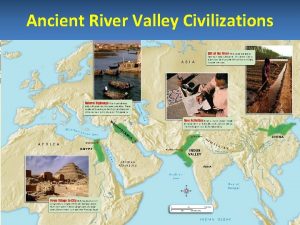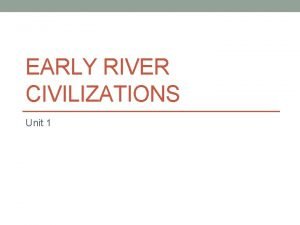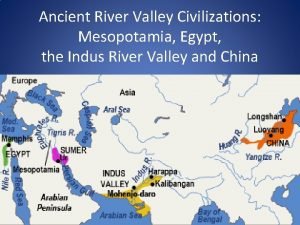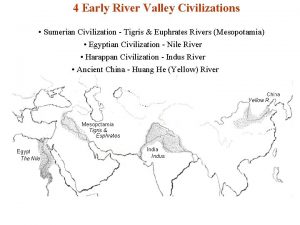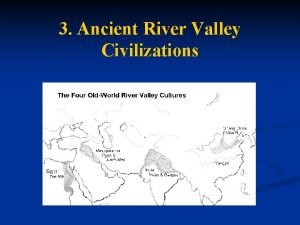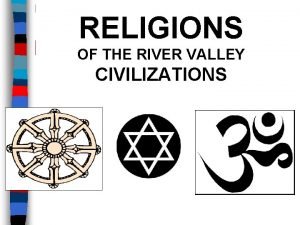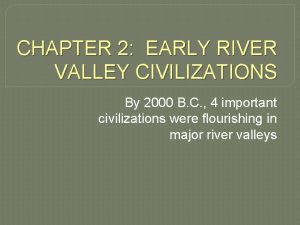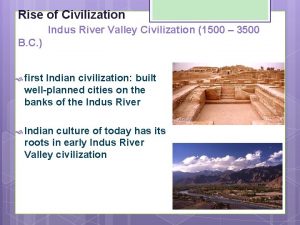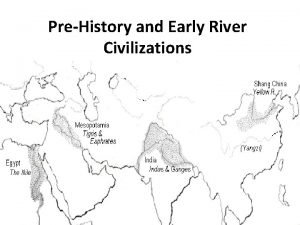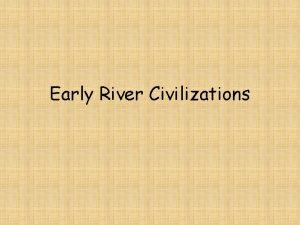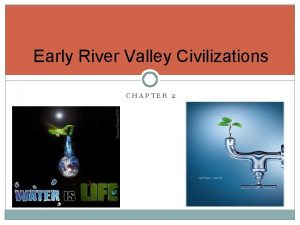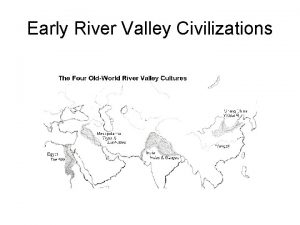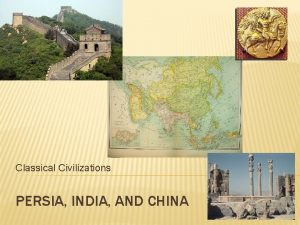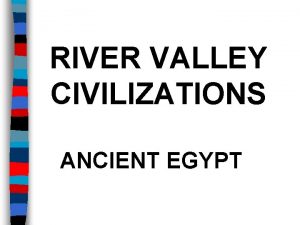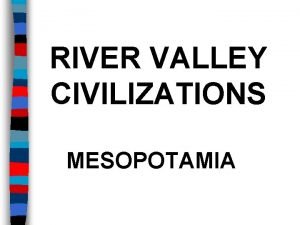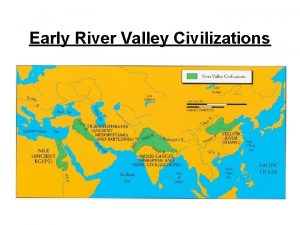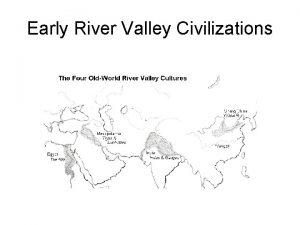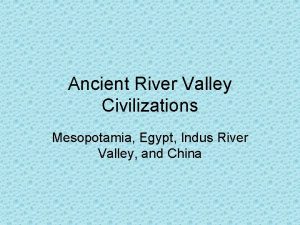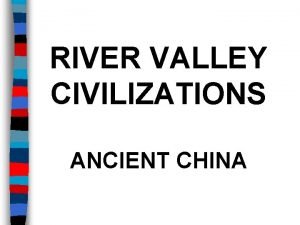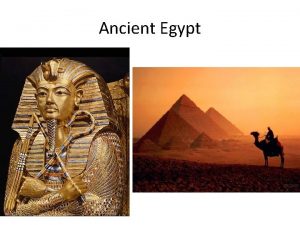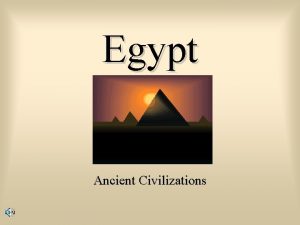RIVER VALLEY CIVILIZATIONS ANCIENT EGYPT Essential Question What
















- Slides: 16

RIVER VALLEY CIVILIZATIONS ANCIENT EGYPT

Essential Question: What do you already know about Ancient Egypt?

Ancient Egypt’s civilization began along the Nile River in North Africa

Egypt was bordered on both sides by miles of scorching desert These natural barriers isolated Egypt and protected it from outside invasion

The Nile River’s annual floods were predictable and provided fertile soil for farming (a perfect place to start a civilization) The Nile flooded so predictably that the Egyptians designed their calendar around it Egypt has been called the “Gift of the Nile”; there would be no Egyptian civilization without the Nile

LASTING CONTRIBUTIONS Advanced Cities: Cities developed along the Nile River in “Upper Egypt” and “Lower Egypt”

LASTING CONTRIBUTIONS Ancient Egypt had a hierarchy of specialized workers –?

Life in Ancient Egypt Like Mesopotamia, Egypt also used a class system. The Pharaoh and ruling family was at the top of society. Below the Pharaoh were the noblemen and priests. Followed by merchants, scribes, and artisans. Most people were peasant farmers and slaves with a terrible life! Egyptian women had a higher status and greater independence than other ancient civilizations. They could do almost everything that men could do!

LASTING CONTRIBUTIONS Government : Pharaohs ruled Egypt as “king-gods” and were thought to control nature

LASTING CONTRIBUTIONS Government : Egyptians constructed pyramids and elaborate tombs for the pharaohs

LASTING CONTRIBUTIONS Religion: Egyptians were polytheistic and believed the gods controlled all aspects of life

LASTING CONTRIBUTIONS Writing: Egyptian hieroglyphics were both pictograms and a phonetic alphabet

Hieroglyphics were translated using the Rosetta Stone This stone was inscribed with a decree from a pharaoh; it has three languages on it, so it provided the basis for understanding Egyptian hieroglyphics

Egyptians created Papyrus, which was a thick paper they used to write on. They made the paper from a reed plant that grew along the Nile River.

LASTING CONTRIBUTIONS Technology: Egyptian ideas included a 365 day calendar, geometry, astronomy, and the pyramids

Ending Activity
 River valley civilizations map
River valley civilizations map Ancient river valley civilizations powerpoint
Ancient river valley civilizations powerpoint Ancient river valleys map
Ancient river valleys map River valley civilization map
River valley civilization map River valley civilizations map
River valley civilizations map Ancient chinese civilization
Ancient chinese civilization River valley civilizations religion
River valley civilizations religion Chapter 2 early river valley civilizations
Chapter 2 early river valley civilizations Seasonal winds that dominate india's climate
Seasonal winds that dominate india's climate River valley civilizations map
River valley civilizations map River valley civilizations vocabulary
River valley civilizations vocabulary Indus river valley job specialization
Indus river valley job specialization Ancient civilizations of the old world map
Ancient civilizations of the old world map Chapter 2 early river valley civilizations
Chapter 2 early river valley civilizations 4 river civilizations
4 river civilizations Chapter 9 lesson 1 ancient india
Chapter 9 lesson 1 ancient india The two classical civilizations of ancient india were the
The two classical civilizations of ancient india were the

